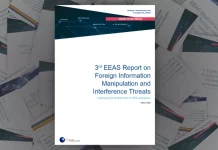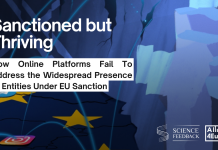By Igor Gretsky, for International Centre for Defence and Security
The ninth Brief in the “Russia’s War in Ukraine” series concerns Russia’s propaganda war.
Igor Gretskiy, a Research Fellow of the Estonian Foreign Policy Institute at the ICDS, examines key elements of Russia’s propaganda and disinformation that were crucial in the years long preparation of the invasion of Ukraine. He describes how the Kremlin’s official narratives were used to pave the way for Russia’s military aggression against Ukraine, and how Russia’s propaganda has changed as the war has progressed.
He states that the Kremlin began to prepare the Russian public for the invasion of Ukraine after the Biden-Putin summit in Geneva on the 30th of June 2021. He analyses Moscow’s language of war and concludes that Soviet-style narratives about Nazism and Western anti-Russian conspiracies became the main premises of the propaganda offensive. He also concludes that Russia’s president most likely began to plot the outright aggression after his re-election in 2018.
Gretskiy further states that the Russian mainstream media failed to provoke the populations and local authorities in eastern Ukraine into mass defections to the Russian side and lost the battle for the Ukrainians’ hearts and minds. It rather intensified the Russian domestic neo-imperial narrative.
Download and read:
- Brief No.9. Russia’s Propaganda War (PDF)
- Brief No.8. WMD Issues (PDF)
- Brief No.7. When Russia Went to War (PDF)
- Brief No.6. The War at Sea (PDF)
- Brief No.5. The Early Air War (PDF)
- Brief No.4. Large-Scale War and NATO (PDF)
- Brief No.3. Russian Military Logistics (PDF)
- Brief No.2. The War in Cyberspace (PDF)
- Brief No.1. The Kremlin’s Aims and Assumptions (PDF)
By Igor Gretsky, for International Centre for Defence and Security





